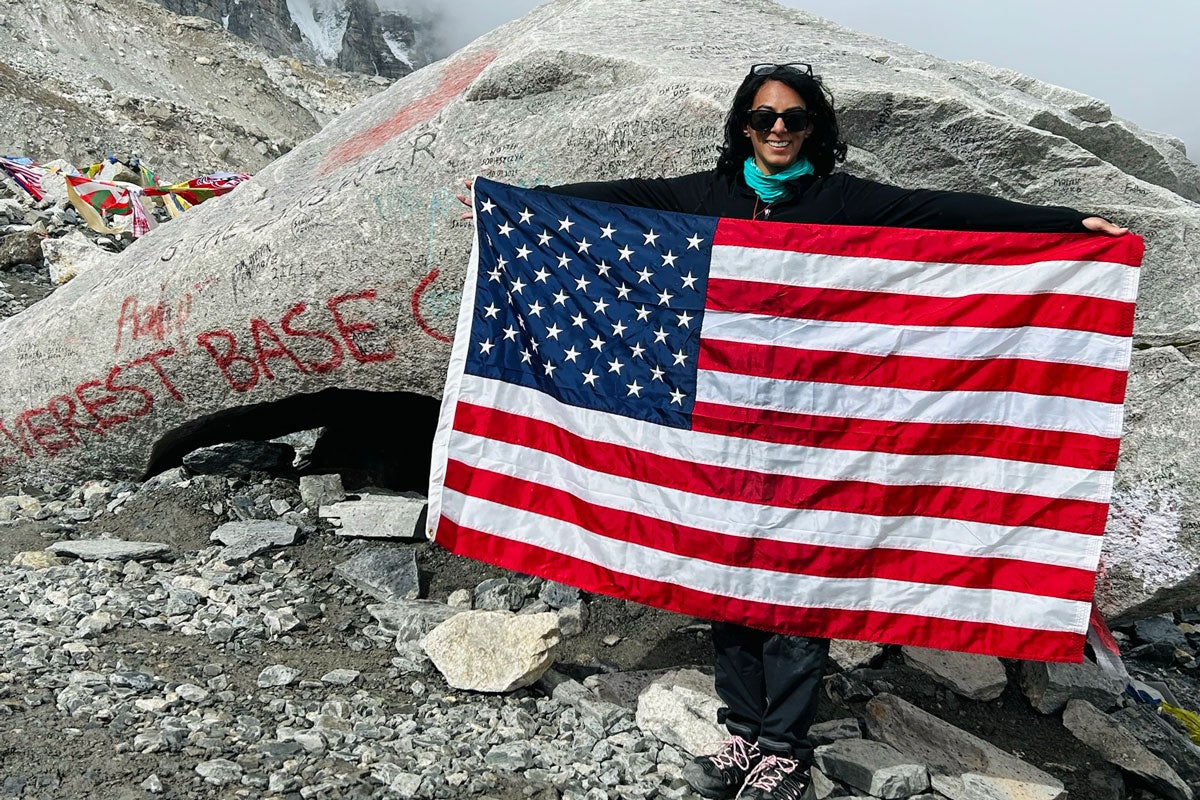Seventeen thousand six hundred feet, nine days and one major milestone later, interdisciplinary studies graduate Lauren Harby ’23 can proudly say she climbed to Mount Everest’s south base camp in Nepal — one of the most iconic and well-known treks in the world. A frequent solo traveler and thrill-seeker at heart, she was inspired by the Himalayas during her first visit to Nepal in 2019, vowing to return one day to challenge her limits and test her inner strength.
She fulfilled that promise four years later with the trek of a lifetime to climb the world’s tallest mountain in October 2023. A true test of her limits, posing some challenges and new experiences along the way, her journey serves as a powerful reminder to appreciate the beauty and wonder of life.
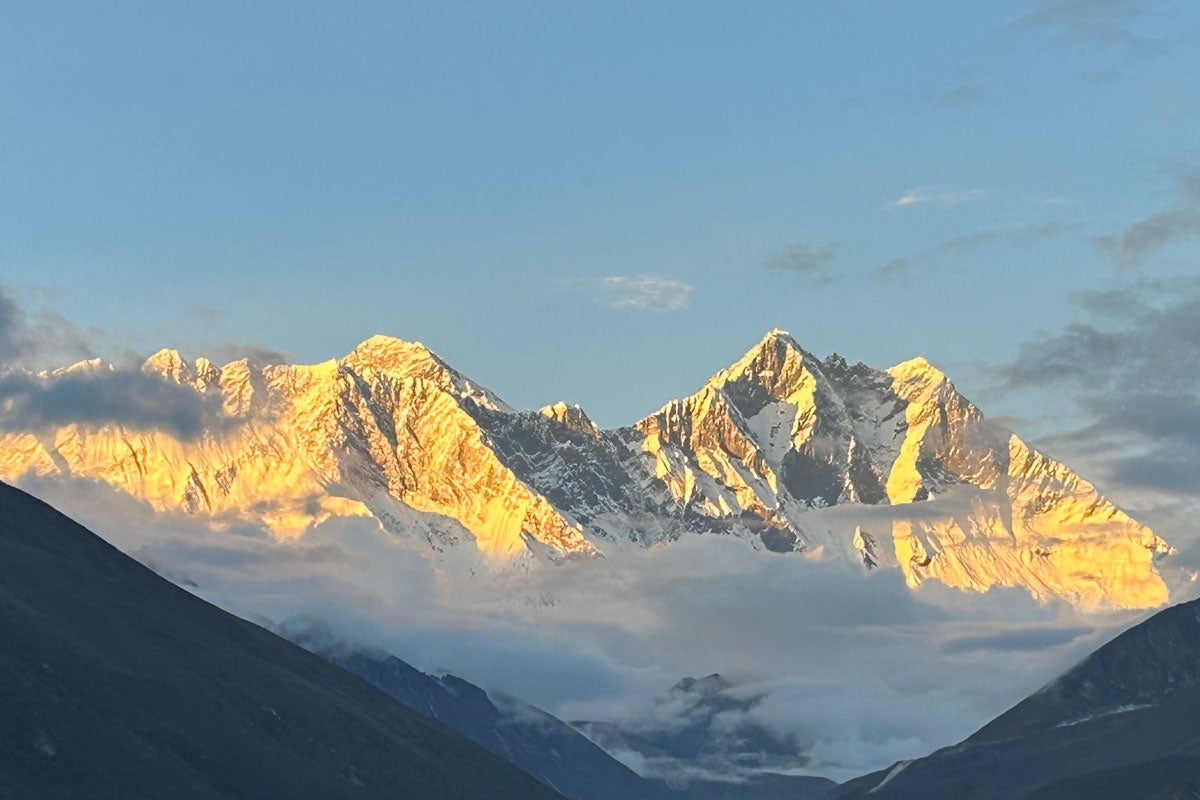
Prepared for Anything
Preparedness was key for Harby, who trained at the gym using the StairMaster with a weighted backpack to simulate the trek’s demands. She also utilized altitude training masks to simulate varying altitudes. Despite physical preparation, the mental challenge loomed large, particularly the prospect of flying from Tenzing-Hillary Airport to reach the trek’s starting point. Known as one of the world’s most dangerous airports, it’s carved into the Himalayan mountains and has a single, short runway that can only accommodate small aircraft.
Trekking to the Top
While initially intending to trek solo, Harby found camaraderie with a colleague and fellow adventurer who shared her same dream of climbing Everest.
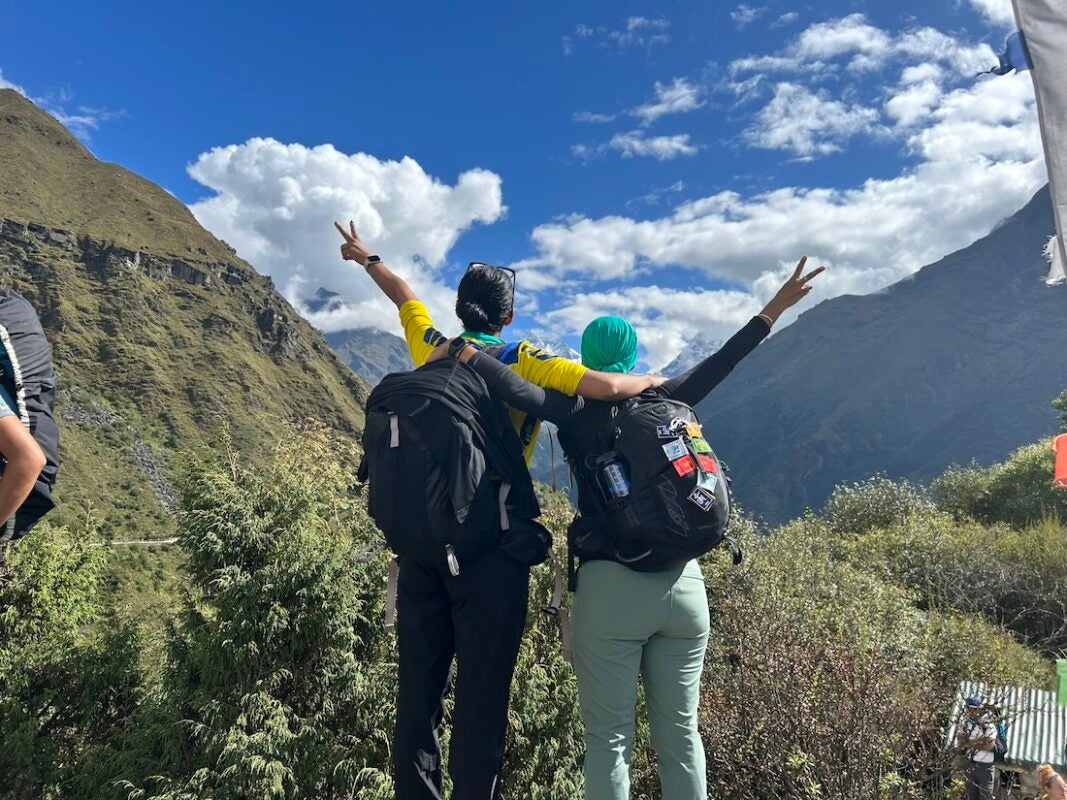
“I had never met another female solo traveler who wanted to do the same thing,” Harby says. “So we met up and we said, ‘Let’s do this together.’ ”
Their 12-day journey stretched to 17 due to weather delays in Kathmandu, Nepal, but they faced this setback with determination. Accompanied by a porter, who carried their larger bags, and a knowledgeable sherpa guide, Harby’s daily routine started at 6 a.m., involving six to seven hours of hiking and periodic stops at eateries and rest areas.
The first few stops in lower altitude — Phakding, Namche Bazaar, Tengboche — offered plenty of homey comforts. They found Irish bars, bakeries, plenty of souvenirs and gear shopping and religious sites such as the Tengboche Monastery. Ascending from lower altitudes to over 13,000 feet, the trek grew increasingly difficult, with altitude sickness posing a significant challenge. Harby mitigated symptoms like headache and dry cough with acetazolamide tablets.
As the environment changed at each stop, familiar faces provided a sense of community.
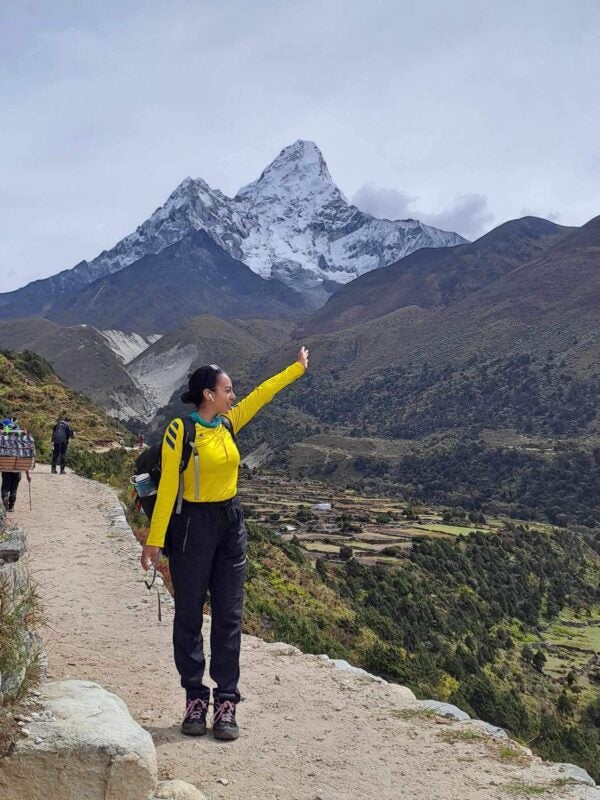
“Since most guided treks follow the same schedule, you see the same people almost every day,” she says. “Meeting up for evening tea and to just decompress from the day was a highlight as we journeyed onward. We even started a WhatsApp group to keep in touch.”
By 4 p.m., the group would reach their next town and check-in to a lodging place, called a tea house, for the night. These tea houses are designed to meet trekkers’ basic needs — food and a place to sleep. Extras like a hot shower, Wi-Fi, toilet paper and charging stations are available for an additional cost.
“Most evenings we’d end up in the common area [of the tea house] where fellow travelers would wind down from a long day of trekking,” she says. “I’d just tune out the world for a couple of hours and watch some shows that I downloaded on my iPad just to have some sense of normalcy.”
Their arrival at base camp was unmistakable, marked by a massive rock bearing the words “Everest Base Camp” in red paint.
“I didn’t think I would cry once I saw base camp for the first time. Once my hand touched the rock, that’s when it really felt exhilarating,” she says. “It just felt overwhelming … to be there in person.”
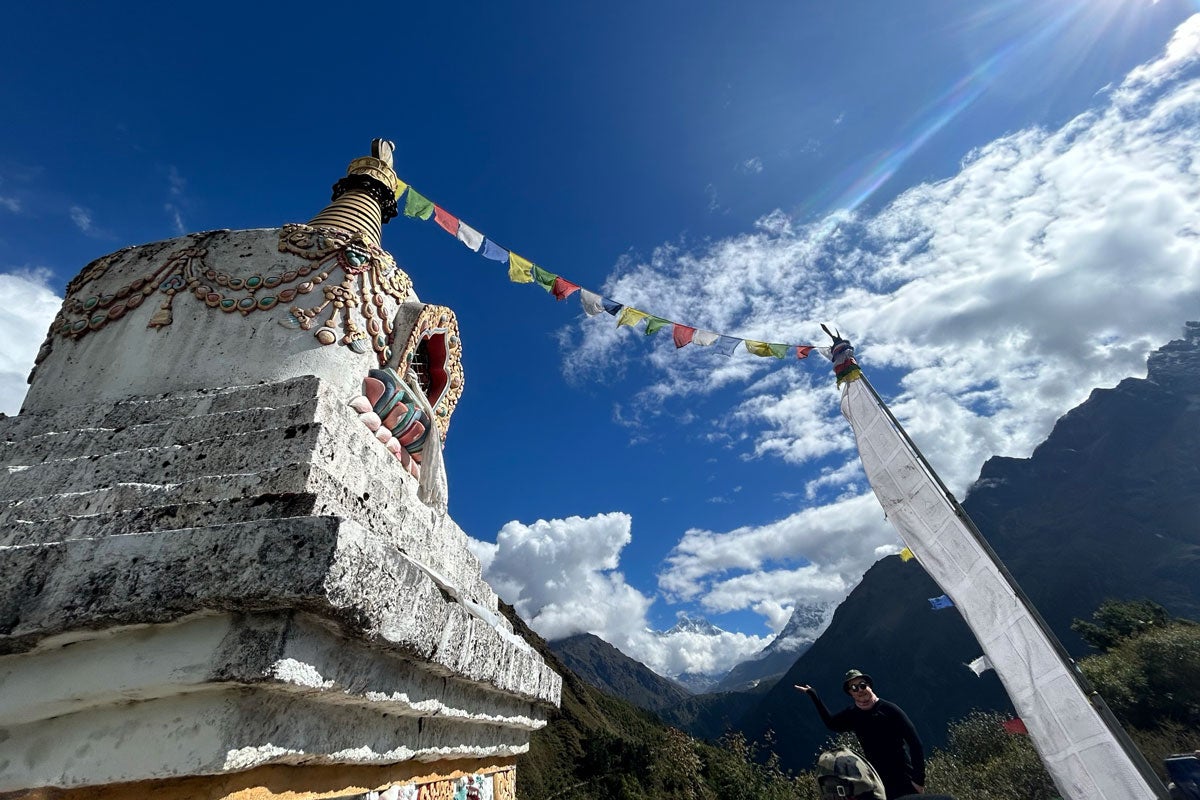
Forever Changed
Trekking to Everest base camp in Nepal was a unique experience for Harby, distinct from her past adventures in paragliding, skydiving and climbing fourteeners in Colorado. She marks the journey as one of her biggest accomplishments in life so far.
“This journey has proven to me that I can do anything, and whatever challenges I face along the way, I’ll find a way to overcome them.”
“I learned that I am capable of so much more than I really think that I am,” she says. “This journey has proven to me that I can do anything, and whatever challenges I face along the way, I’ll find a way to overcome them.”
It’s onward and upward for Harby from this point forward. With her newfound courage to dream bigger, she plans to return to Nepal and take on the Annapurna base camp as well as Mount Kilimanjaro in the future.
“If you have a goal, believe in your goal and your soul is going to get you there,” she says. “Your spirit is so much stronger than you think it is, and I fully believe that we’re all capable.”
